选课中心NEW
7099人选课
SAT【0】元讲座
免费学
托福【0】元讲座
免费学
SAT模考网站HOT
39209人预约
托福备考练习HOT
39209人预约
SAT辅导课程NEW
免费报名
AP辅导课程NEW
立即报名
中学生托福课程NEW
立即报名
大学生托福课程NEW
立即报名
【定制】1v1
私人订制
【资料】考前冲刺
精
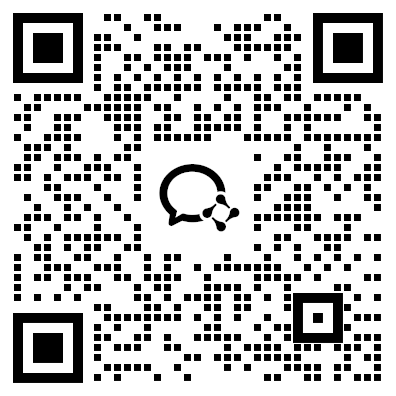
扫码添加助教
免费领取
备考资料大礼包

扫码关注公众号
0:49
Let's look at a specific video so you can see how it works. Two years ago, recording artist Chris Brown released the official video of his single "Forever." A fan saw it on TV, recorded it with her camera phone, and uploaded it to YouTube. Because Sony Music had registered Chris Brown's video in our Content ID system, within seconds of attempting to upload the video, the copy was detected, giving Sony the choice of what to do next.
1:16
But how do we know that the user's video was a copy? Well, it starts with content ownersdelivering assets into our database, along with a usage policy that tells us what to do when we find a match. We compare each upload against all of the reference files in our database. This heat map is going to show you how the brain of the system works. Here we can see the original reference filebeing compared to the user generated content. The system compares every moment of one to the other to see if there's a match. This means that we can identify a match even if the copy used is just a portion of the original file, plays it in slow motion and has degraded audio and video quality. And we do this every time that a video is uploaded to YouTube. And that's over 20 hours of video every minute. When we find a match, we apply the policy that the rights owner has set down.
2:11
And the scale and the speed of this system is truly breathtaking. We're not just talking about a few videos, we're talking about over 100 years of video every day, between new uploads and the legacy scans we regularly do across all of the content on the site. When we compare those hundred years of video, we're comparing it against millions of reference files in our database. It would be like 36,000 people staring at 36,000 monitors each and every day, without so much as a coffee break.
2:44
Now, what do we do when we find a match? Well, most rights owners, instead of blocking, will allow the copy to be published. And then they benefit through the exposure, advertising and linked sales. Remember Chris Brown's video "Forever"? Well, it had its day in the sun and then it dropped off the charts, and that looked like the end of the story, but sometime last year, a young couple got married. This is their wedding video. You may have seen it.
3:10
(Music)
3:12
What's amazing about this is, if the processional of the wedding was this much fun, can you imagine how much fun the reception must have been? I mean, who are these people? I totally want to go to that wedding.
3:23
So their little wedding video went on to get over 40 million views. And instead of Sony blocking,they allowed the upload to occur. And they put advertising against it and linked from it to iTunes.And the song, 18 months old, went back to number four on the iTunes charts. So Sony is generating revenue from both of these. And Jill and Kevin, the happy couple, they came back from their honeymoon and found that their video had gone crazy viral. And they've ended up on a bunch of talk shows, and they've used it as an opportunity to make a difference. The video's inspired over 26,000 dollars in donations to end domestic violence. The "JK Wedding [Entrance] Dance" became so popular that NBC parodied it on the season finale of "The Office," which just goes to show, it's truly an ecosystem of culture. Because it's not just amateurs borrowing from big studios, but sometimes big studios borrowing back.
4:18
By empowering choice, we can create a culture of opportunity. And all it took to change things around was to allow for choice through rights identification. So why has no one ever solved this problem before? It's because it's a big problem, and it's complicated and messy. It's not uncommon for a single video to have multiple rights owners. There's musical labels. There's multiple music publishers. And each of these can vary by country. There's lots of cases where we have more than one work mashed together. So we have to manage many claims to the same video.
4:51
YouTube's Content ID system addresses all of these cases. But the system only works through the participation of rights owners. If you have content that others are uploading to YouTube, you should register in the Content ID system, and then you'll have the choice about how your content is used.And think carefully about the policies that you attach to that content. By simply blocking all reuse,you'll miss out on new art forms, new audiences, new distribution channels and new revenue streams.
5:20
But it's not just about dollars and impressions. Just look at all the joy that was spread through progressive rights management and new technology. And I think we can all agree that joy is definitely an idea worth spreading.
5:32
Thank you. (Applause)
SAT水平能力测试【0元免费测试】
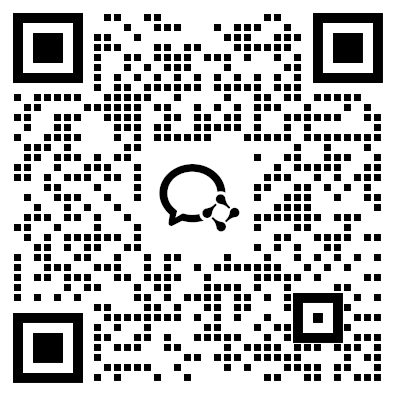
 资料下载
资料下载
【SAT】SAT官方指南题目合集10套
发布时间:2024-04-15添加新东方在线美本助教号
回复【美本资料】获取
SAT阅读+文法+数学专项题型练习册
发布时间:2024-05-31添加新东方在线美本助教号
回复【美本资料】获取
机考SAT-可汗练习题
发布时间:2024-02-29添加新东方在线美本助教号
回复【美本资料】获取
机考SAT-CB官方样题
发布时间:2024-02-29添加新东方在线美本助教号
回复【美本资料】获取
《学科留学百问 (AP-IB-A Level)》
发布时间:2023-02-22添加新东方在线美本助教号
回复【美本资料】获取
2024中国学生留学备考白皮书
发布时间:2023-02-22添加新东方在线美本助教号
回复【美本资料】获取
2023北美考试一本通高中篇
发布时间:2023-02-22添加新东方在线美本助教号
回复【美本资料】获取
新东方SAT阅读讲义
发布时间:2023-02-06添加新东方在线美本助教号
回复【美本资料】获取
2023北美考试一本通高中篇
发布时间:2024-02-29关注美本留学家长帮微信订阅号
回复【美本资料】获取
2024中国学生留学备考白皮书
发布时间:2019-12-19添加新东方在线美本助教号
回复【美本】获取
《学科留学百问 (AP-IB-A Level)》
发布时间:2019-12-19添加新东方在线美本助教号
回复【美本资料】获取
机考SAT-CB官方样题
发布时间:2019-12-19添加新东方在线美本助教号
回复【美本资料】获取
机考SAT-可汗练习题
发布时间:2019-12-19添加新东方在线美本助教号
回复【美本资料】获取
SAT阅读+文法+数学专项题型练习册
发布时间:2019-11-28添加新东方在线美本助教号
回复【美本资料】获取

添加美本助教
即可获取美本资料大礼包

 推荐阅读
推荐阅读
在2024年的QS学科排名中,英国大学再次展现了他们在教育领域的卓越表现。这次排名中,英国大学在16个学科领域取得了世界第一的成绩,为其在全球教育界树立了新的标杆。
来源 : 网络整理 2024-04-23 11:16:49 关键字 : QS学科排名,英国大学qs学科排名
市场营销作为当代商业领域中至关重要的学科之一,一直备受关注。为了帮助读者更好地了解2024年全球市场营销学科的最新发展和排名情况,本文将介绍QS世界大学市场营销学科的排名榜单,并提供相关的官网链接供读者参考。
来源 : 网络整理 2024-04-23 10:21:37 关键字 : 市场营销学科排名,qs学科排名
备受关注的2024年酒店管理学科全球大学排名榜单终于揭晓,给全球学子带来了巨大的惊喜和期待。作为酒店管理学科领域的权威排行榜,该榜单汇集了各大知名院校和学者的投票和研究结果,为学生们提供了一份权威的选校参考指南。
来源 : 网络整理 2024-04-23 10:15:16 关键字 : 酒店管理学科排名,qs学科排名
每年QS世界大学统计与运筹学学科排名榜单都受到广泛关注,2024年的排名榜单也引起了极大的关注和讨论。首先,让我们来看一下2024QS世界大学统计与运筹学学科排名榜单的前几名。
来源 : 网络整理 2024-04-23 10:10:12 关键字 : 统计与运筹学学科排名,qs学科排名
随着2024QS世界大学经济与计量经济学学科排名榜单的发布,我们可以全面了解到这一领域的最新动态。本文将为您详细介绍2024QS世界大学经济与计量经济学学科排名榜单,解读其中的重点内容,并对我国相关大学在排名中的表现进行分析。
来源 : 网络整理 2024-04-23 10:03:55 关键字 : 经济与计量经济学学科排名,qs学科排名
最新发布的2024QS世界大学社会政策与行政管理排名榜单已经震动了全球教育界。这一排名榜单是依据世界知名教育机构QS(Quacquarelli Symonds)的权威数据和专业评估,为我们提供了一份准确且独具参考价值的全球大学排名。
来源 : 网络整理 2024-04-22 17:01:59 关键字 : 社会政策与行政管理学科排名,qs学科排名
社会学作为一门独具特色的学科,对于了解人类社会的发展和变迁起着举足轻重的作用。每年,QS世界大学社会学排名榜单会揭晓全球各大高等院校在这一领域的表现,并成为了各界人士瞩目的焦点。今天,让我们一起来揭晓2024年的榜单,并深入探讨排名的背后故事。
来源 : 网络整理 2024-04-22 16:56:00 关键字 : 社会学学科排名,qs学科排名
在当今竞争激烈的社会中,选择一所优秀的大学对我们的未来发展至关重要。随着法律行业的日益发展和全球化的趋势,了解和掌握国际上优秀的法律学府成为了无比重要的事情。而2024QS世界大学法律与法律研究排名榜单正是我们选择合适学府的权威指南。
来源 : 网络整理 2024-04-22 16:51:49 关键字 : 法律与法律研究学科排名,qs学科排名
2024QS世界大学教育与培训排名榜单,作为权威的评估之一,给出了全球范围内的学府排名。本次榜单覆盖了各个学科领域,综合评估了学校的教学质量、师资水平、科研实力等多个方面,旨在为学生和家长提供一个参考。
来源 : 网络整理 2024-04-22 16:48:08 关键字 : 教育与培训学科排名,qs学科排名
政治学作为一门研究人类政治行为、政治制度、政治思想等内容的学科,一直备受关注。近日,2024QS世界大学排名公布了最新的政治学学科排名榜单,引起了广泛的关注和讨论。
来源 : 网络整理 2024-04-22 16:38:53 关键字 : 政治学学科排名,qs学科排名

自动领取备考资料大礼包
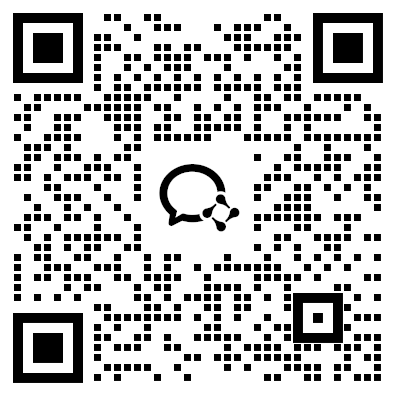
1. 打开手机微信【扫一扫】,识别上方二维码;
2.添加【美本助教】,自动领取留学备考资料大礼包。
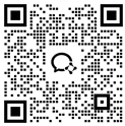
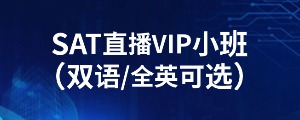 SAT直播/精讲课
SAT直播/精讲课
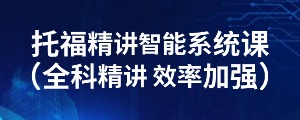 托福精讲系统课(旗舰版)
托福精讲系统课(旗舰版)
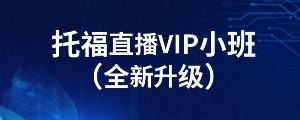 托福直播VIP小班
托福直播VIP小班
 公开讲座
公开讲座
真实了解自己的水平,为备考做好规划!
价格 : ¥0元
真实了解自己的水平,为备考做好规划!
价格 : ¥0元
真实了解自己的水平,为备考做好规划!
价格 : ¥0元

 资料下载
资料下载
添加新东方在线美本助教号
回复【美本资料】获取
添加新东方在线美本助教号
回复【美本资料】获取
添加新东方在线美本助教号
回复【美本资料】获取
添加新东方在线美本助教号
回复【美本资料】获取
添加新东方在线美本助教号
回复【美本资料】获取
添加新东方在线美本助教号
回复【美本资料】获取
添加新东方在线美本助教号
回复【美本资料】获取
添加新东方在线美本助教号
回复【美本资料】获取
关注美本留学家长帮微信订阅号
回复【美本资料】获取
添加新东方在线美本助教号
回复【美本】获取
添加新东方在线美本助教号
回复【美本资料】获取
添加新东方在线美本助教号
回复【美本资料】获取
添加新东方在线美本助教号
回复【美本资料】获取
添加新东方在线美本助教号
回复【美本资料】获取

自动领取备考资料大礼包

1. 打开手机微信【扫一扫】,识别上方二维码;
2.添加【Ella助教】,自动领取留学备考资料大礼包。
 阅读排行榜
阅读排行榜
 相关内容
相关内容